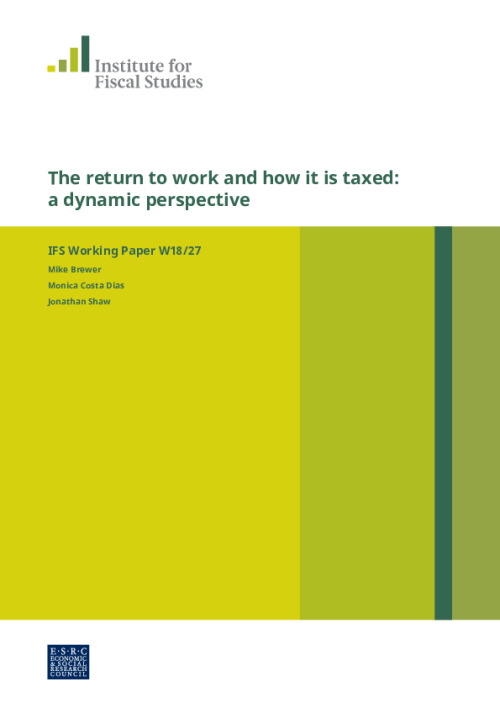This paper provides an empirical account of the dynamic payoff to work and how it is affected by taxes and transfers. In doing so, we bring the insights from the literature on dynamic labour supply to the issue of estimating the financial payoff to work, which has previously focused solely on the current period return. We do this by developing two new summary statistics – one that measures the dynamic payoff to work and the other that measures the impact of personal taxes and transfers on the dynamic payoff to work – and implement these using simulated data from a sophisticated dynamic model of education and labour supply. At the median, we find that the dynamic payoff to work is almost 30 per cent stronger than a static measure would imply, a very substantial difference. Allowing for behavioural responses undoes much of the impression of stronger incentives for low-educated women but has little impact for high-educated women, further widening the difference in incentives between these groups. In contrast, a dynamic perspective makes relatively little difference to impact of personal taxes and transfers on the payoff to work.
This page was updated 07/08/2019.












